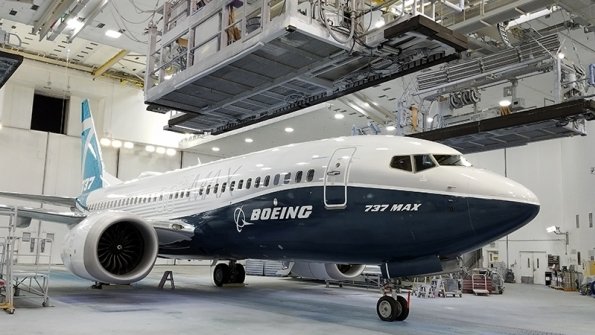
A lawsuit against Boeing Co was filed in U.S. federal court on Thursday in what appeared to be the first suit over a March 10 Ethiopian Airlines 737 MAX crash that killed 157 people.
The lawsuit was filed in Chicago federal court by the family of Jackson Musoni, a citizen of Rwanda, and alleges that Boeing, which manufactures the 737 MAX, had defectively designed the automated flight control system.
Wednesday’s complaint was filed by Musoni’s three minor children, who are Dutch citizens residing in Belgium.
Boeing did not immediately respond to a request for comment on the lawsuit.
The 737 MAX planes were grounded worldwide following the Ethiopian Airlines disaster, which came five months after a Lion Air crash in Indonesia that killed 189 people.
Boeing said on Wednesday it had reprogrammed software on its 737 MAX to prevent erroneous data from triggering an anti-stall system that is facing mounting scrutiny in the wake of two deadly nose-down crashes in the past five months.
The planemaker said the anti-stall system, which is believed to have repeatedly forced the nose lower in at least one of the accidents, in Indonesia last October, would only do so once per event after sensing a problem, giving pilots more control.
The crash of Boeing’s passenger jet in Ethiopia raised the chances that families of the victims, even non-U.S. residents, will be able to sue in U.S. courts, where payouts are much larger than in other countries, some legal experts have said.
The lawsuit says Boeing failed to warn the public, airlines and pilots of the airplane’s allegedly erroneous sensors, causing the aircraft to dive automatically and uncontrollably.
Ethiopian officials and some analysts have said the Ethiopian Airlines jet behaved in a similar pattern as the 737 MAX involved in October’s Lion Air disaster. The investigation into the March crash, which is being led by the Ethiopian Transport Ministry, is still at an early stage
Boeing unveils software fix to 737 MAX
Embattled aviation giant Boeing pledged Wednesday to do all it can to prevent crashes like two that killed nearly 350 people in recent months, as it unveiled a fix to the flight software of its grounded 737 MAX aircraft.
Boeing gathered hundreds of pilots and reporters to unveil the changes to the MCAS stall prevention system, which has been implicated in the crashes in Ethiopia and Indonesia, as part of a charm offensive to restore the company’s reputation.
“We are going to do everything to make sure that accidents like this don’t happen again,” Mike Sinnett, Boeing’s vice president of product strategy, told reporters at a factory in Washington state.
Sinnett said were developed “after months of testing and hundreds of hours” — at the company’s massive factory in Renton, Washington.
The MCAS, which lowers the aircraft’s nose if it detects a stall or loss of airspeed, was developed specifically for the 737 MAX, which has heavier engines than its predecessor.
Among the changes, the MCAS will no longer repeatedly make corrections when the pilot tries to regain control, and will automatically disconnect in the event of disagreements between the two “angle of attack” (AOA) sensors, the company said.
The initial investigation into the October Lion Air crash in Indonesia, which killed all 189 people on board, found that one of the AOA sensors failed but continued to transmit erroneous information to the MCAS.
Boeing also will install a warning feature – at no cost — called a “disagree light” to indicate to the pilot when the left and right AOA sensors are out of sync.
The company also is revising pilot training, including for those already certified on the 737, to provide “enhanced understanding of the 737 MAX” flight system and crew procedures.
Source: Africanews.com

